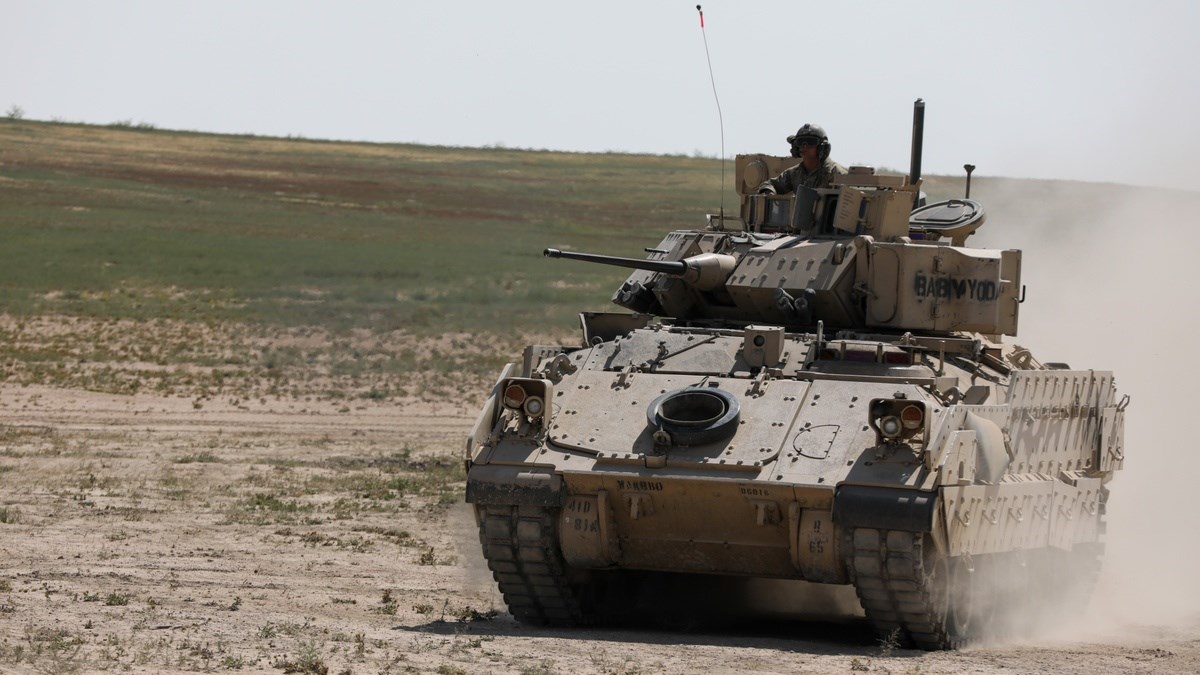US refuses to say if Ukraine is to receive toxic depleted uranium ammo
The United States is not declaring whether it would be providing Ukraine with depleted uranium ammunition to use against Russian tanks.
-

M2 Bradley Infantry Fighting vehicle (BAE Systems)
The White House is not disclosing whether Washington would give Ukraine depleted uranium anti-tank munition in light of the ongoing war, according to the transcript of a press briefing, as reported by The Intercept, despite there being mountains of evidence showing that the weapon causes cancer and birth defects.
According to The Intercept, an unnamed reporter asked on January 25 unnamed "senior administration officials" at a background briefing whether the Bradley Fighting Vehicles Washington was sent to Ukraine in the form of aid would be armed with the 25 mm armor-piercing depleted uranium rounds they are renowned for being able to fire.
The official only responded by saying they were "not going to get into the technical specifics." However, the technical specifics in question are critical, as they could damage Ukrainians - which they are supposed to help - in the long run.
Depleted uranium is a common byproduct of manufacturing nuclear fuel and weaponry, making it able to penetrate through the thick layers of a tank's armor and ignite everyone inside of it, though the radioactivity and toxicity of these rounds are believed to have caused birth defects, cancer, and other diseases, most notably in Iraq during the US war on the country.
The US heavily used depleted uranium rounds in Iraq during the Gulf War, firing nearly a million rounds, and the subsequent years saw a spike in birth defects and cancers in the country.
Experts told The Intercept that the risks the radioactive weapons pose mean the White House owed the public transparency regarding the transfer of depleted uranium ammunition to Ukraine.
Despite the cons of using depleted uranium, the West is unable to curb Ukraine from using it if it falls into its hands, as they are believed to be able to help Kiev against Russia's tanks.
"When there is war, everything else is secondary compared to sheer survival. On the other hand, the outcry because of environmental destruction must not be omitted if the country is to be habitable again afterward," the International Coalition to Ban Uranium Weapons said at the start of the Ukraine war.
The Pentagon had announced in early January its latest military assistance package for Ukraine, worth $3.75 billion includes 50 Bradley fighting vehicles, 500 TOW anti-tank missiles, and 250,000 rounds of 22mm ammunition.
It also includes 100 M113 Armored Personel Carriers, 55 Mine Resistant Ambush Protected Vehicles (MRAPs), and 13 High Mobility Multipurpose Wheeled Vehicles (HMMWVs).
It includes 70,000 155mm artillery rounds, 500 precision-guided 155mm artillery rounds, and 1,200 155mm artillery rounds of the Remote Anti-Armor Mine (RAAM) system.
The package additionally provides Ukraine with 36 105mm towed Howitzers and 95,000 105mm artillery rounds.
It also includes 10,000 120mm mortar rounds, additional ammunition for HIMARS, and approximately 2,000 anti-armor rockets.
The Pentagon further stated that the package will include - for the first time ever - the Sea Sparrow anti-aircraft, anti-missile weapon systems which, according to Cooper, will be integrated into the Soviet Buk surface-to-air missile system.
"The RIM-7 will integrate with the Buk system. So, this is a Soviet-type system. The S-300, that's a strategic range, whereas the Buk is a shorter-range system," Cooper said during a press briefing. "It is a creative solution that did require some engineering finesse"
Meanwhile, Politico reported on Thursday that the US will send Ukraine its most modern Abrams M1 main battle tank, citing three informed sources.
According to Pentagon Deputy Spokesperson Sabrina Singh, the US will supply the more modern M1A2 type of Abrams tanks to Ukraine, confirming earlier rumors from US media.
President Biden announced on Wednesday that the US would send 31 Abrams tanks to Ukraine. However, US officials have stated that it will take a few months to finalize the training and delivery process before they can be mobilized on the battlefields in Ukraine, most likely they wouldn't be delivered before the anticipated Ukrainian counteroffensive.
The arms delivery prompted warnings and reminders that federal regulations prevent the government from being equipped with a covert armor that uses depleted uranium.
According to the report, the M1A2 Abrams tank has upgraded targeting optics on top of the M1A1 version incorporating a separate thermal optics system that enables the tank's commander to search for targets in all kinds of weather and battlefield circumstances.
Costing around $10 million a piece, the US-made complex battle tank is very difficult to maintain and will pose a logistical challenge to be resupplied as it operates on jet fuel.

 5 Min Read
5 Min Read








